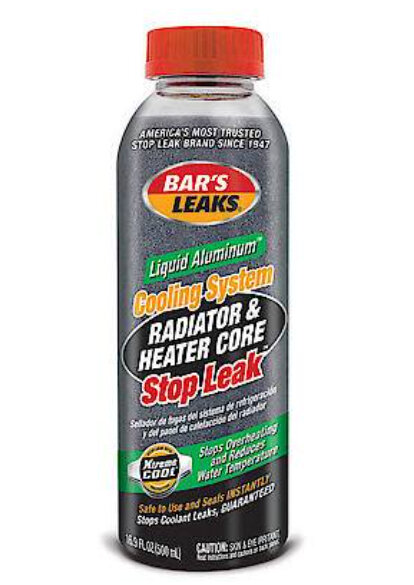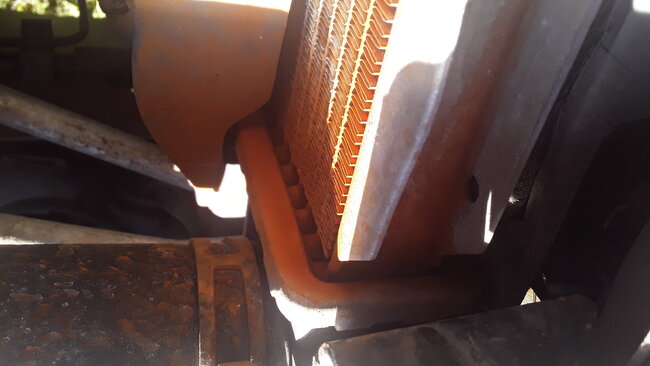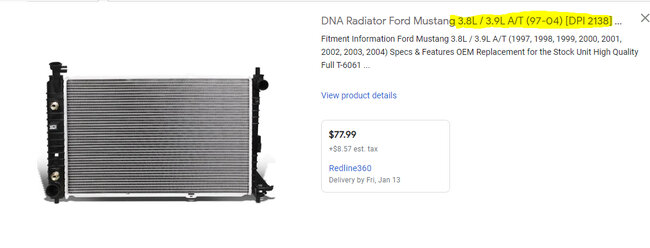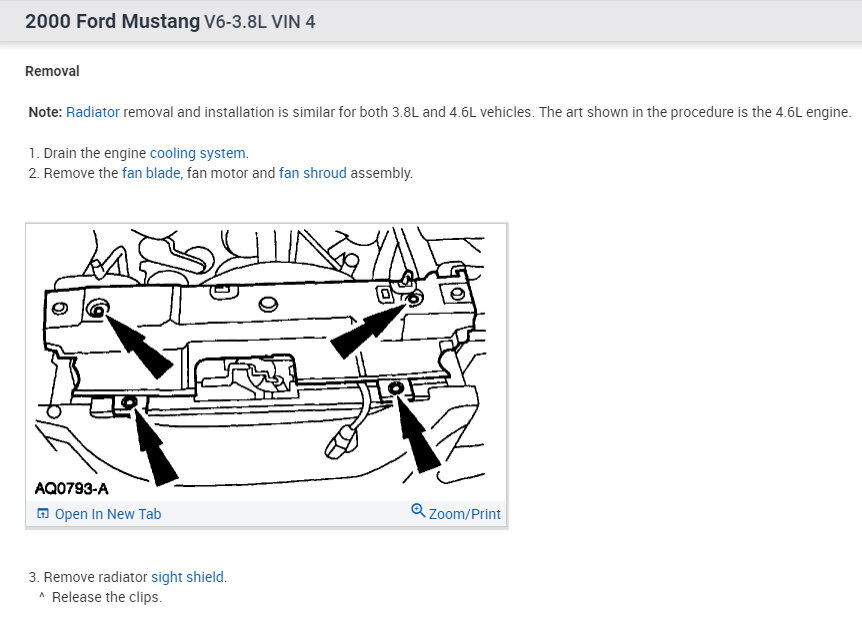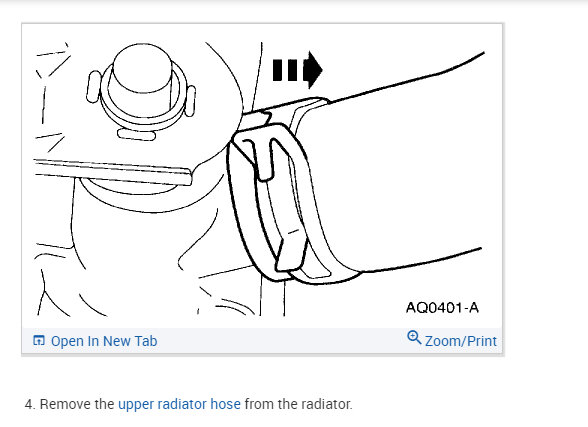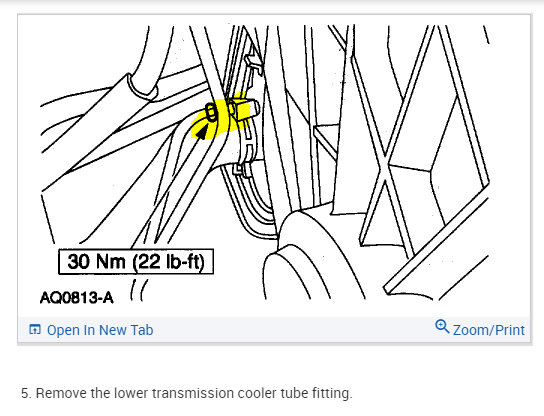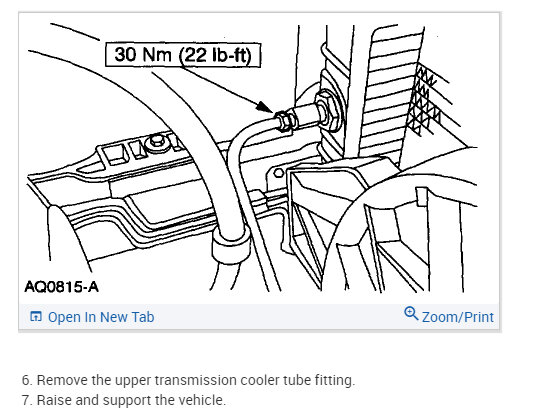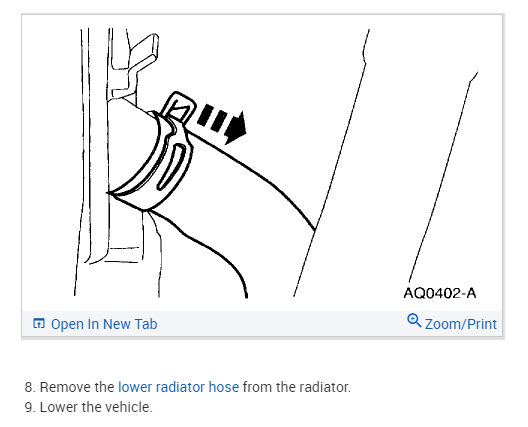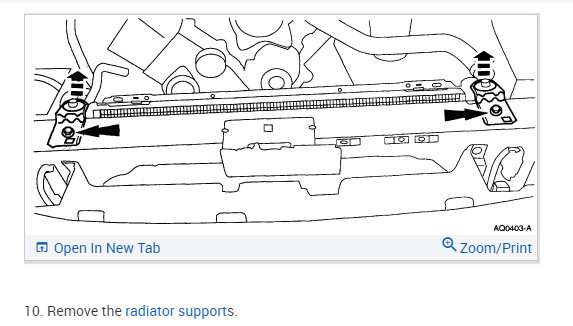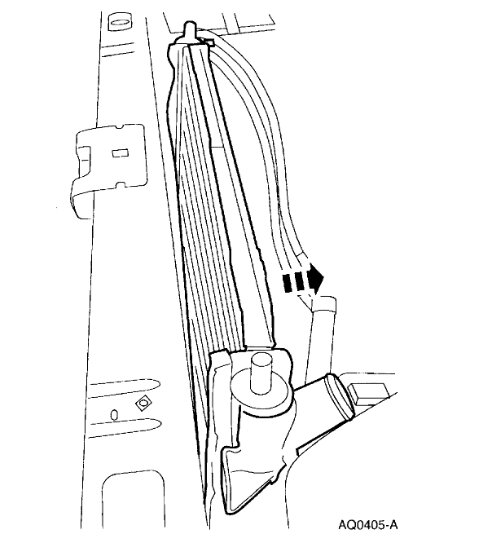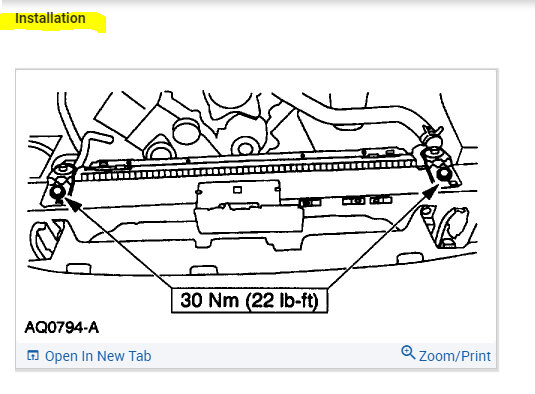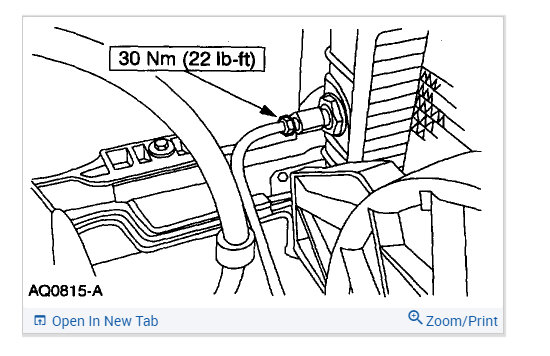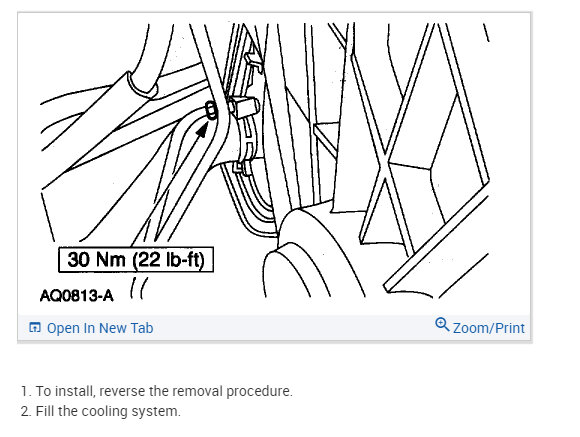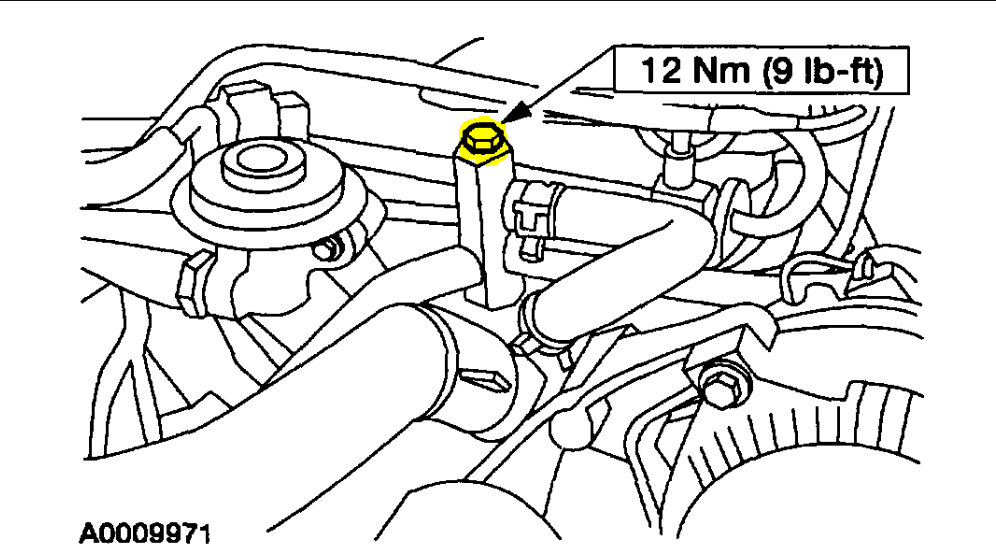Hi,
It would be a good idea to flush the system, and I would be happy to help. As far as flushing it, follow the directions in this link:.
https://www.2carpros.com/articles/coolant-flush-and-refill-all-cars
Next, here is a link that explains in general how a radiator is replaced. You can use this to help guide you through the process.
https://www.2carpros.com/articles/how-to-replace-a-car-radiator
Next, I attached the directions specific to this vehicle for replacing the radiator. Even though they are specific, at some points I feel they are vague. If you are not sure of something, let me know.
One last thought. Once you have everything put back together and are ready to add coolant to the radiator, you must open a bleeder vent. The last picture below shows its location.
Open that and slowly add coolant until it comes out of the bleeder in a solid stream (no air left in system). Then, close the bleeder, confirm the radiator is full, and fill the overflow reservoir to the cold mark.
Once that is done, the vent is closed tight and the radiator cap is installed, start the engine and turn the heater on high. Allow the engine to idle. As the engine warms up, you will start to feel heat being provided by the heater and the temperature gauge should slowly go up to operating temperature. If there is no heat after a while or the temperature gauge doesn't move, turn the engine off and allow it to cool. Recheck the coolant level once the engine is cold.
Let me know if this helps.
Take care,
joe
See pics below.
Images (Click to make bigger)
Thursday, December 29th, 2022 AT 9:43 PM
